Ford Puma vs Hyundai i10 - Differences and prices compared
Costs and Efficiency:
Price and efficiency are key factors when choosing a car – and this is often where the real differences emerge.
Hyundai i10 has a decisively advantage in terms of price – it starts at 14600 £, while the Ford Puma costs 24800 £. That’s a price difference of around 10209 £.
Fuel consumption also shows a difference: Hyundai i10 manages with 4.90 L and is therefore somewhat more efficient than the Ford Puma with 5.40 L. The difference is about 0.50 L per 100 km.
Engine and Performance:
Under the bonnet, it becomes clear which model is tuned for sportiness and which one takes the lead when you hit the accelerator.
When it comes to engine power, the Ford Puma has a convincingly edge – offering 168 HP compared to 90 HP. That’s roughly 78 HP more horsepower.
In acceleration from 0 to 100 km/h, the Ford Puma is convincingly quicker – completing the sprint in 7.40 s, while the Hyundai i10 takes 11.40 s. That’s about 4 s faster.
In terms of top speed, the Ford Puma performs to a small extent better – reaching 210 km/h, while the Hyundai i10 tops out at 175 km/h. The difference is around 35 km/h.
There’s also a difference in torque: Ford Puma pulls convincingly stronger with 290 Nm compared to 172 Nm. That’s about 118 Nm difference.
Space and Everyday Use:
Whether family car or daily driver – which one offers more room, flexibility and comfort?
Seats: offers more seating capacity – vs .
In curb weight, Hyundai i10 is noticeable lighter – 996 kg compared to 1316 kg. The difference is around 320 kg.
In terms of boot space, the Ford Puma offers significantly more room – 523 L compared to 252 L. That’s a difference of about 271 L.
In maximum load capacity, the Ford Puma performs to a small extent better – up to 1283 L, which is about 233 L more than the Hyundai i10.
When it comes to payload, Ford Puma slight takes the win – 469 kg compared to 423 kg. That’s a difference of about 46 kg.
Who wins the race?
The Ford Puma proves to be wins the duel decisively and therefore becomes our DriveDuel Champion!
Ford Puma is the better all-rounder in this comparison.
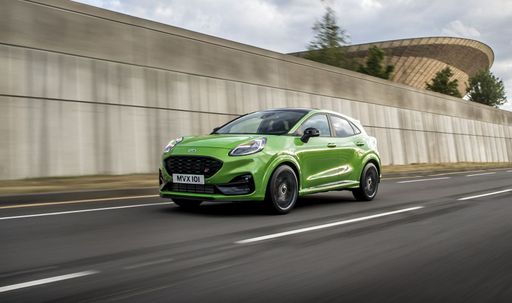 @ Ford Motor Company / Ford Media Center
@ Ford Motor Company / Ford Media Center
Ford Puma
Costs and Consumption
View detailed analysis
Engine and Performance
View detailed analysis
Dimensions and Body
View detailed analysis
Ford Puma
The Ford Puma is a cheeky compact crossover that blends sporty styling with city-friendly practicality, giving drivers a surprisingly fun and composed ride. With clever storage tricks and a lively personality, it’s a smart pick for buyers who want enjoyment without fuss.
details @ Ford Motor Company / Ford Media Center
@ Ford Motor Company / Ford Media Center
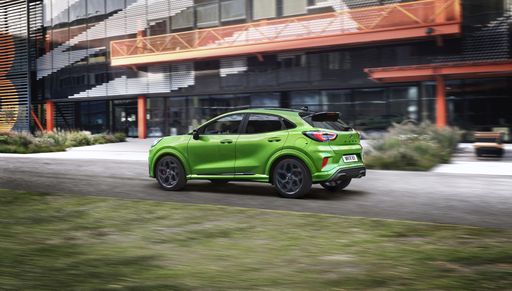 @ Ford Motor Company / Ford Media Center
@ Ford Motor Company / Ford Media Center
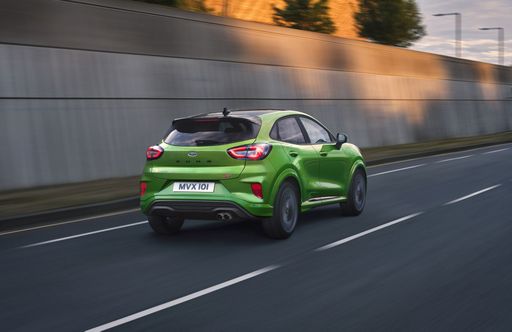 @ Ford Motor Company / Ford Media Center
@ Ford Motor Company / Ford Media Center
 @ Ford Motor Company / Ford Media Center
@ Ford Motor Company / Ford Media Center
Hyundai i10
The Hyundai i10 is a cheeky city car that squeezes big-car confidence into a pocket-friendly package, carving through tight streets with surprising composure and sensible practicality. For buyers after low fuss, sensible equipment and wallet-friendly running costs, it's a smart, no-nonsense pick that makes sense whether you're a first-time driver or need a reliable second car.
details @ Hyundai Motor Company
@ Hyundai Motor Company
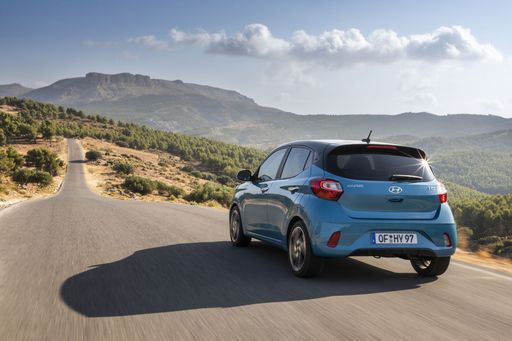 @ Hyundai Motor Company
@ Hyundai Motor Company
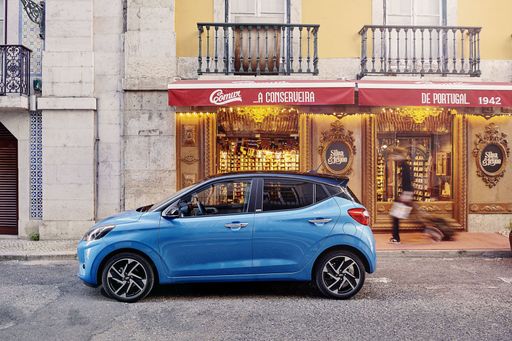 @ Hyundai Motor Company
@ Hyundai Motor Company
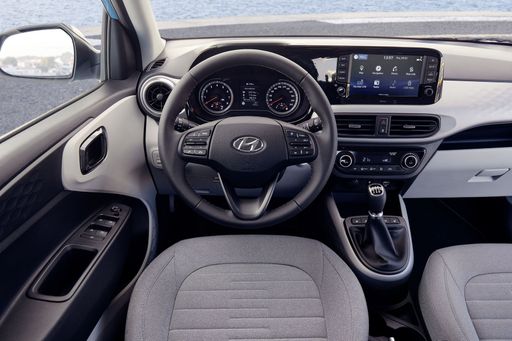 @ Hyundai Motor Company
@ Hyundai Motor Company
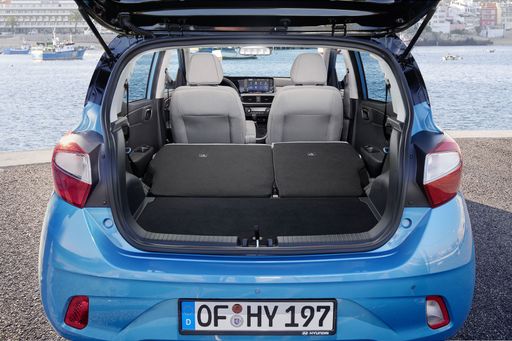 @ Hyundai Motor Company
@ Hyundai Motor Company
 @ Ford Motor Company / Ford Media Center
@ Ford Motor Company / Ford Media Center
|
 @ Hyundai Motor Company
@ Hyundai Motor Company
|
|
|
|
Costs and Consumption |
|
|---|---|
|
Price
24800 - 36300 £
|
Price
14600 - 19000 £
|
|
Consumption L/100km
5.4 - 5.9 L
|
Consumption L/100km
4.9 - 5.5 L
|
|
Consumption kWh/100km
13.1 - 13.9 kWh
|
Consumption kWh/100km
-
|
|
Electric Range
361 - 376 km
|
Electric Range
-
|
|
Battery Capacity
43 kWh
|
Battery Capacity
-
|
|
co2
0 - 135 g/km
|
co2
110 - 124 g/km
|
|
Fuel tank capacity
42 L
|
Fuel tank capacity
36 L
|
Dimensions and Body |
|
|---|---|
|
Body Type
SUV
|
Body Type
Hatchback
|
|
Seats
5
|
Seats
4 - 5
|
|
Doors
5
|
Doors
5
|
|
Curb weight
1316 - 1563 kg
|
Curb weight
996 - 1099 kg
|
|
Trunk capacity
456 - 523 L
|
Trunk capacity
252 L
|
|
Length
4186 - 4226 mm
|
Length
3670 - 3675 mm
|
|
Width
1805 mm
|
Width
1680 mm
|
|
Height
1550 - 1555 mm
|
Height
1480 - 1483 mm
|
|
Max trunk capacity
1216 - 1283 L
|
Max trunk capacity
1050 L
|
|
Payload
367 - 469 kg
|
Payload
344 - 423 kg
|
Engine and Performance |
|
|---|---|
|
Engine Type
Electric, Petrol MHEV
|
Engine Type
Petrol
|
|
Transmission
Automatic, Manuel
|
Transmission
Manuel, Automatic
|
|
Transmission Detail
Reduction Gearbox, Manual Gearbox, Dual-Clutch Automatic
|
Transmission Detail
Manual Gearbox, Automated Manual
|
|
Drive Type
Front-Wheel Drive
|
Drive Type
Front-Wheel Drive
|
|
Power HP
125 - 168 HP
|
Power HP
63 - 90 HP
|
|
Acceleration 0-100km/h
7.4 - 9.8 s
|
Acceleration 0-100km/h
11.4 - 18.4 s
|
|
Max Speed
160 - 210 km/h
|
Max Speed
143 - 175 km/h
|
|
Torque
170 - 290 Nm
|
Torque
93 - 172 Nm
|
|
Number of Cylinders
3
|
Number of Cylinders
3 - 4
|
|
Power kW
92 - 124 kW
|
Power kW
46 - 66 kW
|
|
Engine capacity
999 cm3
|
Engine capacity
998 - 1197 cm3
|
General |
|
|---|---|
|
Model Year
2025
|
Model Year
2024
|
|
CO2 Efficiency Class
A, D
|
CO2 Efficiency Class
C, D
|
|
Brand
Ford
|
Brand
Hyundai
|
Is the Ford Puma offered with different drivetrains?
The Ford Puma is offered with Front-Wheel Drive.
The prices and data displayed are estimates based on German list prices and may vary by country. This information is not legally binding.
